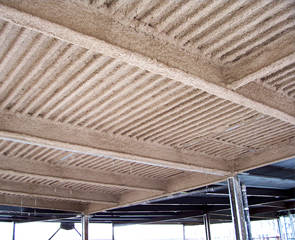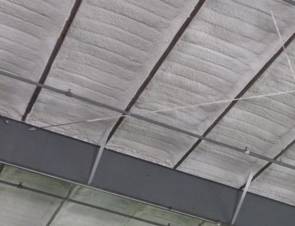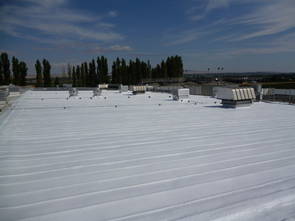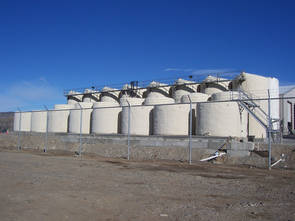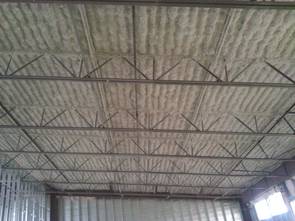FAQ
Frequently Asked Questions About Roofing Installation
How does it save energy?
During the summer, the majority of the building’s heat enters through the roof. When the SPF roofing system is applied as a thermal blanket, it insulates and shields the roof substrate from the
sun’s infrared rays. The result is that the roof never heats up, and therefore the heat is not radiated inside the building. This results in lower A/C costs.
Can I walk on it? Is it heavy?
The SPF roofing is extremely dense material, not at all like lighter foams such as Styrofoam. It can easily handle normal walking and wear and tear, though it weighs only a few ounces per square foot.
Spray Foam roofs typically support a 20% to 70% energy cost savings, which can repay the entire cost of the new roof in as little as 4 years. The local and state governments also have rebates available from time to time. Another great savings comes at the end of ten years when you do not have to re-roof your building again, as you would with most other roofing systems.
What happens if I have standing water?
One of the many wonderful features of SPF roofing is that we can fill in those ponding areas to eliminate deep standing water, without adding much weight. We simply spray additional material in the low spot, lifting it up, to allow the water to get back off the roof where it is supposed to go.
Does the old roof need to be torn off?
SPF roofing is generally applied over the old roof, after it is thoroughly cleaned and any loose material is removed. Since the foam is self flashing, it completely bonds to the substrate it is sprayed on.
How long has Spray Foam roofing been used on roofs? How long does it last?
SPF roofing has been used as commercial, industrial and residential roofing material since the late 60’s. Most of the roofs that were installed since that time are still in good condition, if basic care was taken. Though we don’t know exactly how long a SPF roof will last, the 30+ year old roofs that are still in great condition all over the country can give us a good indication. That is a large difference from the 8-12 years for a cap sheet roof that you may be used to.
What happens if you have to add an HVAC unit or skylight?
SPF roofing is much easier to repair than roll roofing or tar and gravel, with the right materials. Many of our commercial clients have variety of types of tenants moving in and out of their buildings, some with different equipment requirements. The building owner or manager simply calls us for a repair, and generally within a few minutes, the roof can be restored to its original condition.
How does the price compare with roll roofing or tar & gravel?
On larger roofs, the cost is extremely similar and often much less than a seamed type conventional roof. The additional costs for set up on small roofs can make a SPF roof slightly more expensive, but certainly very reasonable and affordable.
What kinds of buildings is Poly-Foam typically installed on?
Spray Polyurethane Foam has traditionally been used on flat roofs, on commercial, industrial and residential buildings. It is not often used on sloped roofs where appearance is a major consideration, such as those roofs which would normally have tile or shingles.
How Long Will The Roof Last?
Now that the oldest SPF roofs are about 30 years old, questions about SPF longevity have been discarded. It is well known that these roofs have an amazing ability to outlast any other roofing systems. It is recommended that every 10 to 15 years a new coat of elastomeric is applied to ensure its continued integrity.
How Does it Work?
Sprayed Polyurethane Foam is a combination of isocyanate and polyol. These two components are fed through a proportioner which heats then pumps the two separate components to the spray gun, where they are mixed and sprayed onto the substrate. Because it is sprayed onto the roof as a liquid, it forms a single continuous structure that is seamless and stable. SPF requires a clean surface for proper application. It must be dry, free of contaminants like oil, and properly fastened to the substrate in accordance with the proper building codes. Since sunlight degrades SPF, it must be protected by a layer of crushed stone or an elastomeric coating. But it is the foam, not the coating, which creates the watertight layer.
What’s an Elastomeric Coating?
Elastomeric Coatings are used to protect against Ultra-violet Radiation. Sprayed Polyurethane Foam has to be protected from exposure to the sun's ultra-violet radiation and moisture. This is where the top coating comes in, it helps to protect and seal the foam from any damage.
What is better, Coatings or Aggregate Ballast?
SPF roofs can be protected from ultraviolet light with coatings — typically acrylic, polyurethane, or silicone coatings — or with crushed stone aggregate. Aggregate-covered roofs, sometimes called “foam and stone,” require stone ranging in size from 1⁄4 inch to 3⁄4 inch Gravel can only be used on relatively flat roofs, and its weight may exceed structural limits. Coated foam weighs only 1⁄3 pound per square foot, while aggregate-covered foam is closer to 6 pounds per square foot. Coated foam makes it easier to spot and repair a roof leak. Gravel maintenance is more difficult, because you can’t see what’s under it. Gravel can stop up drains. The reflectivity values of coatings are known, coatings (unlike gravel) are eligible to receive an Energy Star label Coatings usually cost a little more than stone. Coating on an SPF roof will last anywhere from 10 to 15 years.

